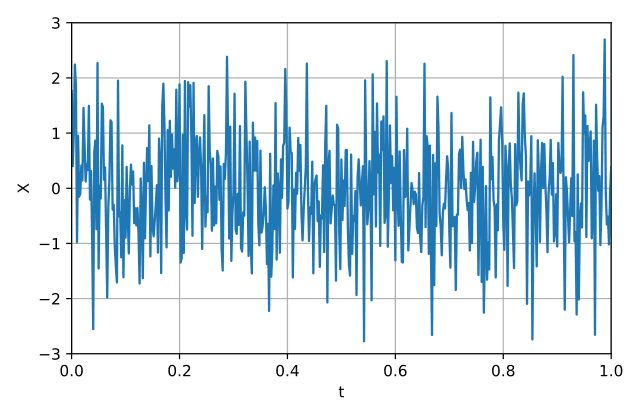Ever been woken up by the blaring sound of your alarm only to find soothing calm in the predictable hiss of the shower? Ever wondered why that static noise, full of chaos, brings a sense of peace? That’s white noise for you, the chaotic yet soothing friend in our daily lives. But what exactly is it, and why does it sound like it does? Let’s find out!
What exactly is white noise? White noise is a specific type of sound that has equal intensity across all frequencies within the range of human hearing, creating a constant, unchanging background sound. It is commonly produced by electronic devices and provides a soothing ambiance that can help mask other, more intrusive sounds.
What is white noise?
Ever caught yourself tuning into that soothing hiss of the fan on a hot summer day or the hum of your laptop during a late-night coding session? That’s white noise for you. You see, in the world of sound, white noise is like a great ensemble cast in a movie, where every frequency of sound gets equal screen time or, in this case, energy distribution.

If you think about frequencies like a team, in the white noise squad, each member contributes equally to the overall noise. Every frequency within the range of human hearing plays at the same intensity, creating a constant background hum. This is why it masks other sounds so well.
Now, you might think this kind of noise is unnatural or artificial. You’d be wrong. White noise is generated by various electronic devices, like your TV or radio when it can’t pick up a signal. It’s the familiar static you’re used to hearing.
AKAI Professional MPK Mini MK3

AKAI Professional MPK Mini MK3
How is white noise used in audio testing?
White noise plays a vital role in audio testing due to its unique properties. Since white noise produces equal intensities at different frequencies, it makes it an invaluable tool for audio testing, and it’s used in several ways:
- Frequency response testing: Since white noise contains all frequencies with equal intensity, it’s often used to test the frequency response of audio equipment. By playing white noise through the device and recording the output, technicians can identify any frequency-dependent distortions or anomalies.
- Room acoustics testing: White noise is commonly used in testing the acoustics of a room or space. It helps to reveal problematic areas of sound reflection and absorption, aiding in acoustic treatment design.
- Masking unwanted sound: White noise is often used in audio testing to create a consistent audio environment. It helps in masking extraneous sounds that could interfere with the testing process.
- Speaker testing: During the production of speakers, white noise is used to ensure they can handle a full range of frequencies without distortion or damage.
- Audio device calibration: Audio devices are often calibrated using white noise. By analyzing the output while the device processes white noise, technicians can adjust the device’s settings to ensure it handles all frequencies equally.
| Do’s | Don’ts |
|---|---|
| Use white noise to test the frequency response of audio devices | Don’t use white noise as the only form of sound testing, it doesn’t replace comprehensive checks |
| Employ white noise to check room acoustics and identify issues with sound reflection and absorption | Don’t rely solely on white noise for room acoustics, other noise types like pink or brown noise can also be useful |
| Use white noise to create a consistent audio environment, masking extraneous sounds during testing | Don’t use white noise in a way that might disrupt others, especially in shared spaces |
| Utilize white noise to ensure speakers can handle a full range of frequencies | Don’t play white noise at high volumes for extended periods, it may cause hearing damage or speaker harm |
What is the difference between white noise and pink noise?
After all this talk about white noise, you might be wondering if there are other colors in the noise spectrum. Enter pink noise, a somewhat lesser-known but equally intriguing character in our sound saga. You see, unlike its white counterpart, pink noise plays a different tune. It distributes energy equally per octave rather than per frequency.

This means more energy gets allocated to lower frequencies, giving pink noise its “darker” sound. Imagine a band where the bass guitar gets to solo more often than the lead, that’s pink noise for you! Beyond just sounding different, pink noise holds an interesting distinction. It’s the kind of noise that nature likes to produce.
Why does pink noise matter?
So, you might be thinking, “Why should I care about pink noise?” Well, pink noise is extremely relevant to us humans, particularly in how we perceive sound.
As we touched on earlier, pink noise pops up in the natural world quite a bit, but it’s more than just a feature of our planet’s soundtrack. Our ears, it turns out, have a thing for pink noise. They process frequencies logarithmically, which means we hear in a way that’s more akin to pink noise than white. We are wired to resonate with pink noise.
This connection with pink noise isn’t just an interesting tidbit for trivia night; it has real-world implications. When taking measurements and references in audio production and acoustics, we often use pink noise. It’s like the “middle C” of the noise world – a baseline we return to time and again.
How are white noise and pink noise generated?
Imagine you’re creating noise by moving something hefty, like water. You get equal energy for each octave – that’s pink noise. But if you’re generating random noise without the hassles of inertia, like the static from a resistor or the flip of a coin, you’re going to get equal energy for each possible outcome – that’s white noise. Basically, it’s made by electronic devices.
Making Pink Noise is a little more involved than whipping up White Noise. Since white noise is pretty easy to whip up electronically or with a computer, you usually get artificial pink noise by giving white noise a low-pass filter. We start with white noise and then adjust the higher frequencies down a touch to keep everything balanced per octave. This is often done using something called an IIR, or Infinite Impulse Response filter.
If you want even more tips and insights, watch this video called “White Noise vs Pink Noise [Audio Engineering & Music Production]” from the Audio University YouTube channel.
Advantages and Disadvantages
Let’s take a moment to go over some of the pros and cons associated with the use of white and pink noise. While both types of noise have their uses and benefits, it’s essential to understand their limitations as well.
Advantages of using white and pink noise
Whether you’re working on a mix or trying to catch some Z’s, here are a few ways white and pink noise can be beneficial:
- White noise can mask other sounds: Its consistent energy distribution across all frequencies can help drown out disturbing noises, which can be particularly helpful for sleep or focus.
- Pink noise helps create a well-balanced mix in audio production: By referencing pink noise, you can ensure your track levels are balanced and harmonious.
- Pink noise is excellent for acoustical measurements and sound isolation: This makes it invaluable when setting up recording studios or evaluating room acoustics.
Cons of using white and pink noise
While these types of noise are undoubtedly useful, they do come with some potential drawbacks:
- White noise can be irritating to some people: Although it’s excellent for masking other sounds, the constant hiss can be distracting or even annoying to some.
- Relying solely on pink noise for balancing a mix can lead to a sterile or lifeless track: Remember, music is about emotion as much as it is about technical perfection. Always trust your ears!
- Misunderstanding pink and white noise can lead to misuse in audio production: Without a good grasp of these concepts, it’s easy to misuse them in practice.
Frequently Asked Questions (FAQ)
Alright, before we wrap up, let’s tackle a few FAQs that often come up when chatting about white and pink noise. These questions aren’t ones we’ve covered directly in the post, so hopefully, they fill in any gaps you might still have!
Can white or pink noise damage my hearing?
While listening to white or pink noise at moderate volumes is generally safe, prolonged exposure to any sound at high volumes can potentially damage your hearing. So, whether you’re mixing a track or using noise to sleep, it’s important to keep the volume at a comfortable level.
Is there a specific type of noise best for sleep?
While some studies suggest that pink noise may improve sleep quality, this largely comes down to personal preference. Some people might prefer the uniform hiss of white noise, while others might find the deeper, richer sound of pink noise more soothing.
Are there other types of noise besides white and pink?
Absolutely! White and pink noise are just two types in the spectrum of noise. Other common types include brown (or red) noise, which has even more emphasis on lower frequencies, and blue and violet noise, which focuses on higher frequencies.
Conclusion
So, there you have it, the lowdown on white and pink noise. So, did I cover everything you wanted to know? Let me know in the comments section below. I read and reply to every comment. If you found this article helpful, share it with a friend and check out my full blog for more tips and tricks on this topic. Thanks for tuning in, and keep the noise flowing!
Key Takeaways
This article covered the intriguing topic of white and pink noise in audio production. Here are some key takeaways:
- White noise and pink noise have different energy distributions, with white noise offering equal energy per frequency and pink noise equal energy per octave.
- Pink noise sounds darker and more balanced because more energy is allocated to lower frequencies.
- Pink noise is useful in audio production for creating well-balanced mixes and is preferred for acoustical measurements or sound isolation measurements.
- White noise is commonly generated by electronic devices while pink noise occurs naturally. However, pink noise can be artificially created from white noise using a low-pass filter.
- Human perception of sound, especially pink noise, is on a logarithmic scale.















